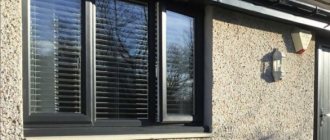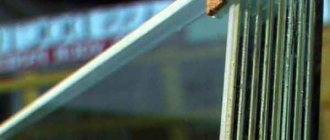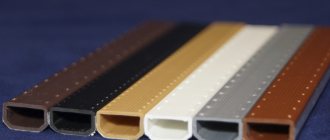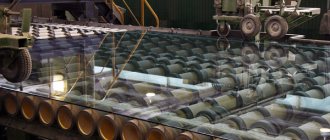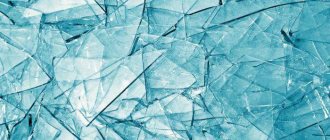Many Stone Age societies around the world used natural glass, such as the volcanic obsidian glass, to make sharp cutting tools. However, according to archaeological evidence, the first true glass was created in coastal northern Syria, Mesopotamia or Egypt.
The history of the earliest known glassware can be traced back to at least 2000 BC. For example, beads were created during the production of earthenware, a glassy material.
Since then, the glass making process has changed greatly. Advances in materials science and manufacturing technology have made it possible to produce glass with special reflective, refractive, and transmitting properties that can be used in prisms, optical lenses, and optoelectronic materials.
Today, glass is produced using two main technologies: the float glass process (also known as flow glass), which involves floating molten glass on a layer of molten metal, and glass blowing, which blows molten glass into a bubble.
Molten glass is made by heating ordinary sand (mostly containing silica) at very high temperatures until it melts and turns into a liquid. When sand cools, it does not return to its original state. Instead, it becomes an amorphous solid, a non-crystalline solid in which the atoms and molecules are not organized into a specific lattice structure.
Let's dig deeper and find out what materials and processes are involved in both methods, and what the future holds for them.
Glass composition
The components that make up glass can be divided into the following types:
- The basis
- Mandatory alkali metal oxides
- Components that impart special properties
- Excipients
Also in some cases, cullet is added.
The basis of any glass is quartz sand or silicon dioxide. Moreover, only selected sand, purified from iron impurities and the slightest impurities, gets into the mixture for future glass; about 2% of impurities are allowed. The transparency of the glass itself depends on this.
The required alkali metal oxides vary depending on the type of glass. For example:
- oxides of sodium, calcium or aluminum are used for window glass
- for crystal - potassium and lead oxides
- for laboratory - oxides of sodium, potassium, boron
- for optical - oxides of barium, aluminum, boron
Components to impart special properties are selected based on the desired effect, for example, titanium or barium oxides are added to impart heat resistance, and so on.
Auxiliary substances are mostly illuminants, bleaches and dyes.
Production raw materials
In glass production, the following chemicals can be used as the main material: oxides, fluorides or sulfides. The classical, most common technology involves the use of quartz sand as the main ingredient (up to 70% of the total mass), containing a large amount of silicon oxide SiO2. Dolomite and limestone, as well as sodium sulfate, are used as additional components.
Glass-forming oxides are added to the mixture as a catalyst and accelerator for the glass formation process. In addition, to give the glass produced certain required properties, additional components are introduced into its composition - tinting materials made on the basis of manganese, cobalt, chromium; clarifiers made from nitrate or arsenic oxide.
Depending on the main glass-forming raw materials and additional components, the following types of glass are available:
- Silicate. Their production is based on silicate oxide SiO2. The main variety used today everywhere in everyday life and in industry. These are window and car glass, mirrors, TV screens and computer monitors.
- Sodium-calcium. This type of glass is also called “soda” or “crown glass”, and is distinguished by its ease of melting and softness, which makes it easy to process. Often used for the manufacture of small parts of complex designs, or in decorative arts.
- Potassium-calcium, or potash. Characterized by refractoriness and hardness. The production of potash glass required a large amount of wood, the main raw material for potash. To get one kilogram of potash it was necessary to burn a ton of trees, so this type of glass was also called “forest glass.” Until the 18th century in Russia, potash glass was the main type produced by the domestic glass industry.
- Lead. In everyday life, this type of glass is better known as “crystal”. The production of crystal differs from traditional technology by introducing lead oxide into the composition as an additional component. The result is heavy glass products that have a bright shine and the ability to dispersion—the decomposition of a light beam into individual components. As a result, when passing through the crystal, the light begins to play with all the shades of the rainbow.
- Borosilicate. It is characterized by high mechanical resistance to various aggressive influences: refractoriness, immunity to acidic and alkaline environments, sudden changes in temperature. This is achieved by introducing boron oxide into the glass mass during the manufacturing process. The cost of borosilicate glass is higher than that of simple silicate glass, but its high mechanical properties more than compensate for this disadvantage. Used for the manufacture of medical and laboratory glassware.
Manufacturing of glass products
Glass products can be divided into two large types. The first are those products that are produced on an industrial scale, the so-called glass containers, for example glass bottles, jars. The second large type is artistic products. This is the name for all products that are made by hand by glassblowers, such as vases, glass figurines, figurines, and the like. In the manufacture of glass products, industrial glass and any glass in general, the initial stage of production is always absolutely similar, until the glass mass is obtained. Only the components included in the charge, the melting temperature and subsequent processing of the resulting glass mass are different.
Production of industrial glass products
The finished glass melt from the furnace falls into a glass line, from which it flows out in the shape of a sausage and is cut into cylindrical drops with a cutter; one such drop is the future bottle or jar. The droplets are directed into what is called a scoop, which directs them into the molding machine. It works using the following method: holders take the drop by the edge and hold it in a hanging position, the entire lower part of the drop is closed on both sides with the desired shape, be it a jar or a bottle; the form can also have certain patterns. After the mold is closed, the holder is moved away and a blowing device is inserted into the drop. It, like a balloon, inflates the drop from the inside with compressed air and the mass takes on the desired shape. Excess molten glass returns to its original form.
By the way, to give the glass any color or shade, certain substances are added to the charge, for example, to give a green color, iron or chromium oxide is added, for blue, copper oxide, and so on.
Now almost finished products move along a heated conveyor, so that there is no sudden temperature change and the product does not crack. From this conveyor, a loading machine moves the products into a lehr, along which they move slowly and gradually cool. Here they are treated with a special solution that allows them to glide and move smoothly. And they move further to the checking and packaging line. After going through all the stages, we receive the finished product.
How art glass products are made
Art glass products are made from the same glass mass. The production of such products uses the same furnace, but the temperature for production is slightly lower than industrial ones, about 1200 degrees. The product itself is made by glassblowers. Glassblowers are like jewelers for glass; they can work alone, in pairs or even more.
Using a long tube, glassmakers take the required amount of hot glass directly from the furnace and immediately begin to shape it using various methods, while periodically blowing through the tube. In the process, you can add more material, for example, for some additional parts. Very small parts are made separately, also using different techniques.
After the details and general shape of the product are formed, it is placed in another kiln for 24 hours. As a rule, the temperature in the heated state is about 400 degrees; at night such an oven is turned off and the products in it gradually cool down to 70 degrees, thereby tempering and hardening.
Glass melting procedure
The production of glass mass is a complex process consisting of several stages. The first stage involves preparing the mixture with the addition of the necessary components in a given proportion. Next, the glass melting furnace is heated to a temperature of about 400 ºC. At this stage, the moisture contained in them evaporates from the ingredients, and thermal decomposition of various salts occurs. Then the temperature gradually increases to +800…900 ºC. At this stage, the process of chemical interaction between all initial components is completed.
The second stage of glass formation begins when the temperature of the melting furnace increases to 1100 ºC. All previously remaining unbound components are completely dissolved in the glass melt. The result is a transparent glass mass, but not a homogeneous substance in its composition. Also, its volume is saturated with a large number of gas bubbles. Next, the production process is reduced to further heating of the melt to t = 1500 ºC. At this temperature, gas bubbles rise to the surface of the melt and burst or dissolve in the liquid glass.
At this stage, the final clarification of the glass is carried out. The composition of the molten liquid becomes homogeneous due to intensive mixing by gas bubbles rising to the surface. This completes the production of the glass melt - the longest and most labor-intensive stage in the entire process.
Cooling and leveling the glass surface
The resulting mixture is poured into baths filled with molten tin. The density of the latter is less than the density of hot glass, so it spreads evenly throughout the bath. At the same time, it is cooled to a temperature of 600 degrees, because the temperature of tin is lower than the temperature of liquid glass. A large roller pulls out the soft glass and pushes it further.
Basic methods and technologies for glass production
Let's look at the main methods and technologies for glass production - there are three of them:
- sheet pulling;
- rental;
- float method.
The sheet pulling method, or the Emile Fourcauld Method
One of the first technologies for producing glass from sand, or more precisely, from finished glass melt, was the drawing method proposed by Emil Fourcaud.
Rice. 1. Fourcauld method
Glass is produced using machine drawing materials. First, the raw materials are melted in a furnace, and the resulting liquid mass is drawn out through rolling shafts. Then it is cooled and cut into pieces. Finally, the sheets are ground, polished, and undergo other processing. The thickness of the webs depends on the speed of the belt.
Equipment for glass production
The glass production process is, of course, lengthy, but nowadays most operations are automated. The equipment is varied and expensive.
Main equipment of glass factories:
- vehicles for transporting sand from quarries to conveyors;
- conveyor belts for moving raw materials to sorting areas;
- sand washing drums;
- sorting devices;
- filtering installations;
- installations for mixing components;
- glass melting furnaces;
- leveling baths or devices for drawing sheets of glass;
- conveyors equipped with rollers for moving glass around the workshop;
- automated device with diamond for cutting sheets;
- pneumatic gripping devices.
Necessary equipment for glass production
Glass production is based on the use of special equipment. It doesn't have to be foreign. Domestic units are in no way inferior to foreign analogues. The production lines have identical systems consisting of the following types of devices:
Equipment for glass production
- equipment for the preparation of raw materials;
- batch mixing installations;
- glass making equipment;
- In expanded production, a sandblasting line and product packaging equipment can be used.
At the first technological stage of raw material preparation, along with simple installations, high-tech units are used.
Conveyors transport ingredients.
Removal of harmful impurities is carried out by sophisticated machines, including magnetic separators. They extract metals from sand that can spoil the properties of the finished product.
To crush the substance, powerful crushers are used.
The second stage of production is associated with the preparation of the charge. The choice of components depends on the properties of the finished product. In this case, special equipment is used.
High-precision scales help to correctly calculate the dosage. With their help, the required amount of quartz sand, soda, and lime is measured. If necessary, secondary materials are added that determine the strength, color, and light transmittance of the glass product.
The prepared components enter the batch mixer, which evenly distributes the materials throughout the mass.
The third, main stage, involves melting glass in special furnaces with individual thermal and technological conditions. Glass furnace equipment has two classifications.
Classification of equipment by technological parameter
Electric pot stove
Pot stoves - used in mini-enterprises. They are designed for small quantities of products. From one to sixteen pots are installed in their cavity. The devices allow the production of high-quality products that are characterized by high light transmission and uniform chemical composition. They are intended for optical, lighting and medical glass.
In the glass industry, continuous and batch bath furnaces in the form of large rectangular containers are common. They come in different designs and sizes. The equipment contains molten tin necessary for cooling the glass melt.
Large bath furnaces are equipped with an automatic control system for the burners necessary to distribute temperature, pressure and gas over the entire surface of the device. Glass production occurs in a certain sequence in all parts of the pool equipped with equipment.
Classification of equipment based on heating principle
Combustion stoves are designed to burn fuel. They have a low efficiency, since thermal energy is distributed to heat the charge and boilers.
Electrical equipment allows the production of any type of glass. They require current to power them. Glass melt is used as a heater - it is this that acts as an electrolyte at high temperatures. When operating electric furnaces, there is no heat loss from exhaust gases.
Combined gas-electric installations combine two types of thermal energy. The combustion of gas heats and melts the charge, the glass mass acquires a high temperature through direct resistance.
At the fourth and final stage of manufacturing glass products, the final product is formed. Different machines are suitable for this:
- cooling equipment;
- forming installations;
- glass levelers.
Glass leveler
Modern glass production technologies
There are also more modern glass production technologies. AGC Glass was one of the first to use them. The production of AGC glass begins with the float stage. Then the resulting layers undergo sequential additional processing.
- To improve thermal insulation properties and sun protection, thin layers of metal oxide are applied to glass sheets. This is done either on the line while the glass is still hot, in which case the coating is called pyrolytic, or by an electromagnetic method, giving a magnetron coating.
- To make laminated glass, the sheets are glued together using polyvinyl butyral film. This results in a bullet- and fire-resistant material.
- For hardening, hardening is used (heating to 700 °C followed by sharp cooling) and chemical action (based on ion exchange between molten salt and glass).
Content
- 1 Glass container production 1.1 Batch House system
- 1.2 Hot end 1.2.1 Oven
- 1.2.2 Formation process
- 1.2.3 Molding machines
- 1.2.4 Internal treatment
- 1.2.5 Annealing
- 1.3.1 Coatings
- 3.1 Local influences
Glass production technology in ancient times
They managed to obtain transparent sheets of large size back in the 14th century; the first glass production technology in ancient times was called lunar. The process followed the following algorithm:
- a glass blowing tube was used to accumulate a mass of 8–9 kg;
- a large glass ball was blown;
- a pontia (an ancient glass-blowing instrument) was attached to it and at the same time the tube was broken off;
- the ball with the pontium was rotated and it took the shape of a disk;
- the resulting workpiece was cut.
Then the cylinder method appeared in the production of glass products. It differed from the lunar one in that the ball was blown into a cylinder.
References
- Werner Vogel: "Chemistry of Glass"; Springer-Verlag Berlin and Heidelberg GmbH & Co. K; 2nd revised edition (November 1994), ISBN 3-540-57572-3
- The dilatometric softening point does not coincide with the deformation point, as is sometimes assumed. For reference, see Experimental data for Td and viscosity in: Database of High Temperature Melt Glass Properties for Process Modeling
; Eds: Thomas P. Seward III and Teresa Wascott; American Ceramic Society, Westerville, Ohio, 2005 ISBN 1-57498-225-7 - B. H. W. S. de Jong, "Glass"; in Ullman's Encyclopedia of Industrial Chemistry; 5th edition, vol. A12, VCH Publishers, Weinheim, Germany, 1989, ISBN 3-527-20112-2C. 365–432.
- ^ a b
"Blow and Impact". Eurotherm. Retrieved 2013-05-20. - "Glass molding machine." Farlex. Retrieved 2013-05-20.
- ^ a b
zbindendesign - Schott Borofloat
- Not all flat panel display glass is produced using the float glass process. Corning uses the pour-down technique, while Schott uses the float glass technique (see Schott website).
- Benvenuto, Mark Anthony (February 24, 2015). Industrial Chemistry: For Advanced Students
. Walter de Gruyter GmbH & Co KG. ISBN 9783110351705.
Manufacturing of special types of glass products
Glass production is not limited to rectangular sheets. The modern glass industry supplies the market with a wide range of glass products used in a wide variety of sectors of the national economy and in everyday life.
- Automotive glass. The main requirement for external glazing of a car is the strength of the glass and the absence of the danger of flying fragments during an accident. Therefore, the production of auto glass is carried out in two stages: casting two identical glass blanks and gluing them together using a special film. The result is a multi-layer structure, held together with adhesive tape. In the event of an accident, fragments of broken car windows remain hanging on the inner film, and the risk of injury from broken glass is minimized.
- Glass container. The production of glass containers - cans, bottles and other containers - makes it possible to provide a number of industries with the necessary utensils, primarily the food and pharmaceutical industries. The manufacturing procedure is reduced to the following stages: obtaining a glass melt; casting containers of a certain shape and volume; hardening of the resulting products.
- Wired glass. The production of reinforced glass involves the simultaneous molding of a sheet with the introduction of a reinforcing metal or polymer mesh into it. This gives the sheet greater mechanical strength and resistance to impact loads, bending and fracture stresses.
- Glass optical fiber. Recently, the production of optical glass fiber has been gaining momentum. It is used in various fields of electrical engineering and fiber optics for transmitting video images. Optical fiber consists of a series of transparent glass strands formed into cable bundles. Welding of glass transmission threads is carried out using special equipment.
- Colored glass. The production of tinted glass has been known for hundreds of years. The required color is given to the glass melt using various additives. Most often they are manganese, cobalt and other metals that can react chemically with the main glass ingredients.
Processing technology for a certain type of glass
Numerous industries use different types of glass, which have individual characteristics and require special processing processes during production.
Sun protection
Solar control glass
This type is capable of absorbing or transmitting ultraviolet radiation. Glass is suitable for making screens, visors, double-glazed windows and glasses. This type of glass is produced using two methods.
Furio's technology is based on rolling glass mass through rollers, after which the sheets are placed in a cooling chamber.
The Float method is more modern and effective, as it eliminates the appearance of defects. The molten mass of a ribbon form enters a tank with tin. Thanks to it, the glass cools and acquires a smooth surface. The material then goes into the oven and is coated with a layer of metal dioxide of the desired shade. The glass is re-cooled and checked for flaws.
Mirror
Glass is based on sheet material. For its production, soda, limestone, sand and minerals without iron ore are used. The ingredients are mixed and placed in continuous ovens. The resulting mass is rolled through metal rollers, fired, polished, and metallized. This is a long process.
Mirror glass
Armored
Scheme of armored glass Glass
is characterized by increased resistance to penetration. This is a multi-layer material consisting of regular and hardened fabric. For the production of armored glass, glass up to 10 mm thick is used, which is glued with a protective polyvinyl butyral film in transverse tension.
This product has many advantages:
- absorbs ultraviolet radiation;
- excludes eavesdropping;
- ensures shatterproofness when broken.
Optical
This glass is used in various fields of science and technology. Contact lenses, prisms, and cuvettes are made from it. The range of products is quite wide. This is a homogeneous, highly transparent material of a certain chemical composition. To cook it, pure ingredients are used, without contaminants. The task of the technologists is to melt the glass melt in pot-fired furnaces and achieve a high degree of homogeneity. For this purpose, mechanical mixing methods are used.
Bent
Or curved glass, used in architecture, which has long ceased to be rectilinear. During the production of products, glass melt is heated to certain temperatures, softens to an elastic state, and it is easy to mold the desired object from it. This occurs under the influence of gravity, which causes the material to take on a convex or concave shape.
Let's talk about construction
In this article you will learn about the types of glass, how raw materials for glass production are obtained and, most importantly, how glass is produced today in the most modern factories.
Glass is one of the most ancient materials used by man. Our ancestors learned to smelt it 5 thousand years ago.
Nevertheless, all these many years, glass, as they say, remained undervalued. The vast scope of its application was fully discovered only a few decades ago. Thanks to glass, we looked far into space, penetrated the depths of the ocean, we began to build houses from it, create works of art. We ourselves did not notice how after the Stone, Bronze and Iron Ages came the Glass Age. Look around, glass surrounds us everywhere. It protects from wind and cold and creates comfort. Today, very durable, safe, environmentally friendly and energy-saving glass is used to glaze skyscrapers.
Today there are a huge number of varieties of glass. From volcanic, the oldest on the planet, to organic (scientists have learned to obtain it quite recently). But the most common one, the one that surrounds us almost everywhere, is silicate glass (from the Latin name of the chemical element Silicium - ancient).
One of the simplest silicon compounds, SiO2, is called quartz. Deposits of quartz sand are found on all continents, and it is one of the most common minerals in the earth's crust. Thanks also to this, glassmaking began many centuries ago almost simultaneously in both Africa and South America.
In fact, the recipe for making glass is extremely simple. It's just quartz sand plus gas to melt it. A lot of gas. A glass melting furnace consumes 2.5 million m3 in one month. methane, the same amount is burned in their apartments by residents of the entire Central District of Moscow.
The thing is that glass crystallizes from a liquid state, and melting quartz sand, that is, essentially turning it into a liquid, is not so easy. To do this, it needs to be heated well, that’s where so much gas goes.
So, glass production includes the following main technological operations:
First things first.
Preparation of raw materials
How are raw materials for glass obtained? Of all minerals, quartz sand is one of the most easily mined. The whole point is that in nature it is already, as they say, in a ready-made state. It just needs to be scooped from the quarry, loaded onto a conveyor belt and sent off. But before becoming glass in a window or a glass on a holiday table, this glass will have to literally go through fire, water and pipes. True, in reverse order. It all starts with a tough casting. All sand from the quarry goes to the sorting gallery, where it is poured into different piles. It is difficult for a non-specialist to determine what the difference is between these heaps, but there is a difference in both the chemical composition and the size of the granules.
When the useful material is finally sorted, it is transported from the quarry to the sand preparation factory. First of all, the sand is washed. This is done using a device that most closely resembles a washing machine. Sand is loaded into the drum, and water is supplied from outside. The drum walls are made of porous film. The pore sizes are so small that they do not allow sand to pass out, but only allow water to pass through. Moreover, no special cleaning agents are added to the water, since they can remain in the sand and change the chemical properties of the sand. After washing, the raw materials are sifted. Sand is removed from unnecessary stones and other large inclusions. Next, the sand undergoes fine filtration. It may contain tiny particles of various metals, but they are not needed in glass. The sand undergoes final cleaning using spiral filters. Under the influence of centripetal force, particles of iron or other heavy metals are pressed to the edge of the whirlpool, and sand and water move to the side.
Now the perfectly clean sand can be sent to the glass melting furnace. But first it needs to be dried. On a round table, hot air is blown through the raw materials to produce glass. Dry sand is scooped up by augers and poured into a receiving hopper. From there it ends up in railroad cars or freight trucks and soon ends up in a glass melting factory.
Along with quartz sand, other materials are loaded into the glass melting furnace: sodium sulfate, limestone and soda. Limestone improves the weather resistance of glass. Baking soda and sodium sulfate lower the melting point. All this melts at a temperature of 1600°C and turns into a liquid viscous substance.
In practice, there is a deviation from this standard. The most common system: Na2O-CaO-SiO2-MgO-Al2O3.
Floatation method
Today, the floatation method is used almost everywhere in the manufacture of sheet glass. At the bottom of the furnace there is a huge bath of molten tin. Liquid glass is poured into this bath, and since its density is less than the density of tin, it spreads in an even layer over the surface and floats. At the same time, it gradually begins to cool and crystallize.
ρliquid glass ≈ 1.4 g/cm3
ρlova ≈ 7.31 g/cm3
In this bath, the glass becomes like plasticine, it is still soft and a special roller pulls it out of the oven like toffee.
At the exit from the furnace, the glass has a temperature of 600°C. The glass ribbon moves carefully along the roller conveyor and gradually cools down. On the edge of this tape you can clearly see the mark left by the same roller that pushed it out of the tin bath. This edge is cut off and the scraps are sent back to the furnace to be melted down.
Next, this infinitely long tape is sent for cutting. Glass is cut into equal parts using a diamond glass cutter, the trajectory of the cutter is such that it moves at a certain angle at the same speed as the glass. This is necessary to ensure that the cut edge of the glass is smooth.
Then one of the transverse rollers, on which the cut glass lies, rises, breaking the sheet. Everything happens automatically. It is not only unnecessary for a person to be at this stage, but even dangerous, because sometimes the glass breaks and the fragments fly in different directions. The maximum single sheet format available today is called jamba (6 m length and 3.21 m width).
Before being sent to the window factory, several finished sheets from the batch are checked. The tests are not complicated - they simply break the glass. Impact test: Three metal balls, each weighing 4.1 kg, are dropped from a certain height.
During this test, the glass has the right to become covered with cracks; its task is to hold the metal ball on the surface and prevent it from breaking through the sheet. Only if, after all three balls fall, no through holes appear in the glass, it is considered valid and the batch is sent further.
All movements of huge sheets in the warehouse are carried out using powerful automated loaders with vacuum suction cups. This is the easiest and safest way. The risk of damage to even the thinnest sheets is minimized.
Finished sheets can theoretically be sent to a window manufacturing factory. Ten years ago they did this. But today double-glazed windows are used almost everywhere. They are much stronger and safer. The idea is that a special film is laid between two layers of glass. If something happens, it holds the fragments and prevents the glass from breaking into pieces. Moreover, the special transparent film is not glued to the sheets, but is soldered to them. After the machine prepares a layer cake from one plastic and two glass cake layers, it is baked in a huge oven at a temperature of 400°C. The output is a double-glazed window .
In conclusion
At the end of the article, I would just like to say “thank you” to our ancestors for teaching us such a skill as glassmaking. Today it is impossible to imagine our world without glass. Thanks to its various useful properties (transparency, hardness, chemical resistance, relatively low price), we can use glass in various industries. There is no doubt that the development of the glass field will only improve, both in terms of glass composition and technology, and accordingly we will expect new types of glass products.
Special types of glass
There are different types of glass used for different purposes. The development of the glass industry and the production of multifunctional glasses make it possible to solve architectural problems in Eraglass building structures, as well as to exploit opportunities for special technical and scientific applications.
Flat glass
Flat or sheet glass is most common in windows, doors, auto glass, mirrors and solar panels. It is made by spreading liquid glass to the desired thickness and cooling it into the final product. Then it can be bent.
Double-glazed window
combines several glass panels into a single window system. Most have double or triple glazing. The glass sheets in insulating glass units are separated by a gasket and a stationary layer of air or vacuum.
Quartz
It is a one-component material that is one of the most valuable materials for science and industry. The raw material is a natural crystal extracted from the earth in the form of rock crystal or pegmatite quartz. It is crushed to fine granules and melted. Used for the manufacture of precision mechanics parts (quartz watches), ultraviolet lamp flasks, chemical reagent containers, and laboratory equipment.
Glass ceramics
Glass ceramics were developed at Corning and share the properties of glass and polycrystalline materials. Initially used in mirrors and mounts for astronomical telescopes. It became famous for its glass-ceramic hobs, as well as cookware and high-performance reflectors for digital projectors.
Glass ceramics have an amorphous phase and one or more crystalline phases. It is produced by "controlled crystallization" (as opposed to spontaneous crystallization), which is not usually required in glass production.
Crystal
Lead crystal glass is a special type of glass that is used to make various decorative items. When cutting the material, the optical phenomenon of total internal reflection occurs very sharply, and thus creates a pleasant dazzling shine.
Bohemian
Often called Bohemian crystal. This is glass produced in the regions of the Czech Republic and Silesia. It has a long history of being recognized throughout the world for its high quality, craftsmanship, beauty and innovative design. Features: hand cut, engraved, blown and painted decorative glass.
Glass is one of those magical materials that we take for granted, but it consistently serves the purpose for which it is intended, provided you use it with care!
Fiberglass
Molten glass is forced through ultra-fine holes, creating glass filaments. They can then be woven into large samples of material or left in a puffy substance used for heat or sound insulation. Fiberglass products include circuit boards, swimming pools, doors, surfboards, sports equipment, boat hulls and exterior automotive parts.
Liquid glass
Silicon-based coating or liquid glass is perhaps the most important nanotechnology product. It fills pores and imperfections and can protect any surface from any damage such as water, UV rays, dirt, heat and bacterial infections. The breathable coating is 500 times thinner than a human hair.
Photosensitive glasses
Photosensitive glass, also known as photostructured or photosensitive glass, is a crystal clear glass that belongs to the lithium silicate family. Provides the ability to obtain an image by the formation of microscopic metal particles in glass after exposure to electromagnetic radiation. It is a very promising material for the production of components of complex microsystems.
Armored
Bulletproof glass has many uses in a variety of industries, including construction. It is made of laminated glass made using special technology. Armored glass is used in buildings that require security, such as jewelry stores, banks and embassies.
Wall glass blocks
Glass blocks are made from two different halves that are pressed and annealed together during the glass melting process. They are used for architectural purposes in the construction of walls, skylights, etc. They provide an aesthetic appearance when light passes through.
Quality requirements
The finished glass product must meet technical, functional, ergonomic and aesthetic requirements.
Technical requirements are the compliance of products with the requirements of regulatory and technical documents.
According to functional requirements, the surface of the glass product must be smooth, the presence of foreign inclusions and external defects must be excluded. According to ergonomic requirements, the glass product must be made convenient and safe to use.
Aesthetic requirements include original appearance, fashionability and high quality workmanship.


